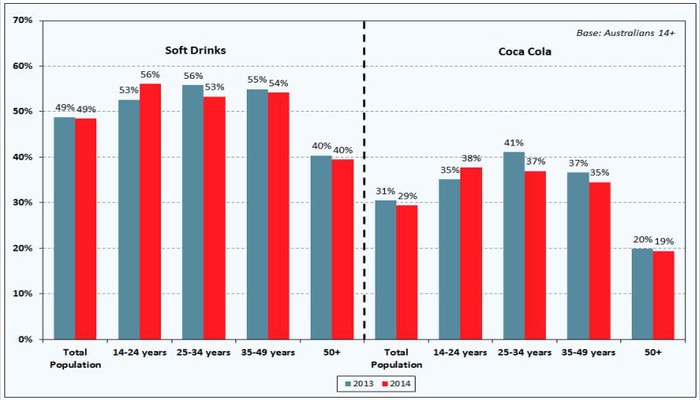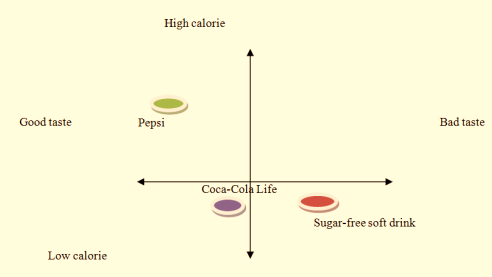Introduction to Marketing Management
The concept of marketing management is the planning, analysis, implementation and control of programs developed to bring desired exchanges in the target market to achieve the corporate goals. Here, the report is inculcating about marketing management of Coke in the Australian market. To analyse the way in which company manages its operations and evaluating factors that impact on the business growth and profitability, the internal and external analysis of Coca-Cola is undertaken. Moreover, the segmentation and targeting strategies of the company is evaluated to identify its primary and secondary target market and level to which business decisions are affected by these targets. Also, the company’s strategic position is assessed by comparing its strengths and weaknesses from the rivals.
Assignment Prime is an online assignment writing service provider which caters the academic need of students.
Get Best Pricing Quotes Free Samples Email : help@assignmentprime.com Order NowTASK 1
1.1 Growth
Over the past five years, the soft drink manufacturing sector of Australia have been characterised by a changing customer trends and weak retail environment, which is limiting the industry’s substantial revenue growth. In spite of these threats, the rising popularity of high value energy drinks and sports and an improving focus on the ranges of diet drinks have supported the growth of the industry. As a consequence, the revenue of an industry is forecast to improve at an annual rate of 2.4% in next five years. It comprises the estimated growth of 2.2% in this year only, i.e. to reach $4.4 billion. Moreover, the global and domestic economic uncertainty over the past five years has resulted in weak customers’ sentiment and soft retail conditions, which is causing buyers to cut their spending (Soft Drink Manufacturing, 2014).
1.2 Profitability
The Australian soft drink market leader is Coca-Cola and its sub-brand including Vanilla Coke, Coke Zero and Diet Coke. Among 14-24 years of youths, 38% generally consumes at least one soft drink of Coca-Cola in a week, which has been increased by 3% from 2013 along with the year-on-year increases of the sale of Vanilla Coke, Diet Coke and Coca-Cola. On the other side, the marked decreases are shown in the soft drink consumption of Australians belonging to the age group of 25-34 years old. In 2013, 56% drank one soft drink in a week, which has fallen to 53% in 2014. Specifically, the percentage who drank Coca-Cola brand has also decreased from 41 to 37% (Soft Drink Manufacturing in Australia, 2016).

Figure 1: Percentage of soft drink consumption in Australia
(Source: More young Australians drinking soft drinks, 2015)
1.3 PESTLE Analysis
Political and legal factors
- Pressure on taurine and caffeine rates
- Restrictive laws implementation
- Government health concern
Economic factors
- Loss in the purchasing power due to recession
- Energy drinks high prices in comparison to traditional beverage
- Carbonated soft drinks mature market
- Alternative beverages rising demand
Social factors
- Unemployment (because most of the people consume energy drinks at the work)
- More population belonging to the age group of 25-34, who are reducing their spending on soft drinks
- Customers health concerns
- Energy drinks fashionable dimension
Technological factors
- An era of social media and internet
- Technical development affecting production and distribution activities
Ecological factors
- Increase in the demand of natural ingredients
TASK 2
2.1 Major market segments of Coca-Cola in Australia
The companies can sell their offerings to the entire market but it is too big. Due to this, a business divide the overall market for its commodities into different segments. There are two most widely utilised demographic variables for the purpose of segmentation, such as gender and age (Collins and Lapsley, 2008). The appropriate segmentation supports the brand in defining the adequate commodities for the particular customer group. A specific segment is not targeted by the Coca-Cola but the company adapts its marketing policies by producing new drinks. Also, it utilises a mix of niche and undifferentiated targeting strategies to increase sales in the competitive market. The Coca-Cola products are globally known and liked by all age group of people while the niche segment is targeted by the diet coke, which includes more health conscious people. The competitive positioning strategy is used by Coca-Cola to beat the non-alcoholic beverages market competition (Jones and Hill, 2010).
Once the segmentation of overall market has been done, one of these segments are selected by the company to consider it as target market. The organisation selects a target market with an aim to direct their marketing strategies to the particular customers group rather than the overall market. It allows the marketer to satisfy effective the targeted group needs and wants and makes it easier for the organisation to improve the profits and sales (Keegan and Schlegelmilch, 2001). Over the years, Coca-Cola target market was modified to concentrate on young adult and teenage customers. The primary targets of the company includes customers belonging to the age group of 14-24 and secondary targets comprised people of 25-34 years old.
The following is the demographic features of the Coca-Cola company target market:
Occupation
No specific occupation is targeted by buyers are mainly family oriented people and students.
Life style
No particular life style is targeted but busier people and youth who belongs to the mobile generation are considered as the most significant customers group of the Coke.
Nature
Entertainment, joy and fun loving (Keller, Parameswaran and Jacob, 2011).
Habits
- Youths who loves media exposure,
- Using social media and mobile apps are part of their routine life;
- Connected people who like innovations.
In the above given overall market, the primary target of the business generate most of its revenue. These are more loyal clients, who purchases the company’s offerings on the repetitive basis. It has been identified through research that generally a small portion of consumers are accountable for the majority of sales. It is denoted as 80/20 principles, as 80 percent of sales comes from the main or primary customer base. However, the secondary target market should not be ignored for while the customers’ number may be small, it does give an alternative in case the primary target customers’ number decreases (Stavroudi, 2016).
TASK 3
3.1 Involvement of primary segments in business decisions
Better understanding of customers is importance for the success of any organisation while not comprehending the buyers adequately may lead to business failure. It is because the regular drive to satisfy the consumers is not just a concern for those responsible to carry out tasks of marketing, the buyers satisfaction is a consideration for all in the entire corporation. The customers are also considered as the main stakeholders of the business and the company which ignores their needs and wants may lose the clientele base to competitors. The Coca-Cola business can be influenced by the consumers through their decision to continue the purchase of soft drinks from the company (Barclay and Brand-Miller, 2011).
The consumers for most of the businesses have taken over as the main influencer. It is not just the organisations want to increase their profits. Rather, they have recognised that satisfied clients and long-term relations with them are main to develop sustainable business success and profits. The customer relationship management is utilised by Coke as a data-driven process of business marketing whereby its marketer gather information on customers for more efficient and targeted sales and marketing efforts (Copeland and et.al., 2007).
Furthermore, the segment of non-alcoholic beverage is more dynamic and competitive. Several innovations and customers increasing focus on their health and wellness have driven soft drinks growth and changing the competitive landscape. The non-alcoholic beverage of Coca-Cola includes a huge range of liquid refreshment categories of beverage including energy drinks, carbonated soft drinks, bottled and enhanced water, juices and energy drinks. All these sub-categories manufacturing decisions are driven by customers rising demand for functional and healthy beverages and the firm’s ability to offer compelling drinks with innovative packaging and unique flavours (Cuganesan, Guthrie and Ward, 2010). The value proposition of Australian customers is ‘No sugar and taste like Coke’. The trend of health and wellness awareness has impacted the beverage and food sector decisions in recent years. Not just rising focus on health and well-being cause buyers to replace their choices but is also develops new occasions of purchasing through functional/preventive meal and products replacements (Gronholdt, Martensen and Kristensen, 2000).
In addition to above, the customers are now more informed. The increase in the number of ‘Smart Customer’ has been driven by their rising awareness of negative effects on health due to highly-processed and artificial ingredients used by the soft drink companies. The customers are also increasingly placing importance on transparency and simplicity of product origin and ingredients. The readily accessible and plentiful data empowers buyers to undertake some type of research before making actual purchases. The internet keeps these individuals better informed about services and products to buy (Guthrie, Cuganesan and Ward, 2008). The younger and millennial buyers, who are the primary targets of Coke now looks at ingredients lists while making purchasing decisions. These clientele group looks the nutrition label on the bottle to get information about ingredients by focusing on how the drink is made and its effects on their consumption. The more transparency demanded by the customers is the main reason of their influence on the company’s decisions. They want to know completely how and where their food is produced and grown, where the company is stand on issue which are significant to considered by them. Therefore, by including the customers’ requirements, Coca-Cola attempts to deliver simple and functional profile of ingredients to attract more number of shares and gain customers positive acceptance in the business decisions (Kelly and et.al., 2013).
TASK 4
4.1 Competition
Coca Cola is the authorised manufacturer and distributor of beverages in Australia. The company is the leader in the 9 billion dollar non-alcoholic beverage industry and have more than 40 percent market share in its soft-drink segment. There are several other competitors within the industry which compete against each other like PepsiCo, Nudie Foods Australia, Bundaberg, Kirks, Schweppes, Saxbys, Heinz, and Golden Circle etc. The Coca Cola faces competition challenges from three key areas – price pressure from major competitor like PepsiCo, private and small brands owned by Supermarket chains, and the Australian Supermarket itself. Australian Supermarket giants like Coles and Woolworths have more than 70 percent market share and so has the power that put price pressure on profitability of Coca Cola (Levy and Tapsell, 2007).
The price war with PepsiCo and others also lead to reduce prices of Coca Cola products which adversely affect their profitability. The heavy discounting by competitors is another area of concern which affects the sales volume. Moreover, Supermarket chains have started to introduce their own brands thorough importing products at cheaper rates which also put financial pressure on Coca Cola (Mangold and Faulds, 2009).
The most of the strengths of Coca Cola and its top rival PepsiCo are similar. For instance, both companies have high profile global brand presence, recognition through aggressive marketing strategies using famous celebrities and are the top 2 leading brands across the world. The difference lies in the facts that Coke has strong bottling strategy whereas Pepsi put more focus on constant product innovation. The major chunk of revenue of Coke comes from the carbonated soft drinks whereas PepsiCo has broader product portfolio including food snacks like chips (Moodie and et.al., 2013).
The weaknesses of Coke includes over dependence on declining carbonated drink’s market and its distribution system is not sufficient for other products. Whereas PepsiCo is leading on this point as they are not so much dependent on only the carbonated soft drinks but has other products also in its portfolio. The weaknesses of Pepsi lies in its targeting segment as they target the narrow market segment of young people (Ni Mhurchu and et.al., 2013).
TASK 5
5.1 Positioning for Coke
The company has strategically positioned itself in soft drink market across the world. The company keep the overall same positioning for the 200 countries where the brand has its operations. However, the company also realizes “think global, act local” principal and adopt the same in Australia. The Coke is willing to keep the same core product, but it adapts its offers locally to satisfy local needs. The strategic positioning is utilised in order to have the same image all around the world, which is a success because it is perceived today as a part of daily life everywhere. The high value perception of the brand by the consumer leads to a high degree of loyalty and makes instinctive purchasing decision. Although Coca Cola consider each customer as a potential target consumer, the primary segment includes the people from age group 14-24 that generates around 40% of total revenue (Sicilia and Palazón, 2008). Coca Cola has been successful by using the USP “Live the coke side of life”, related to joy and happiness which excite its primary customer segment. Consumers like to be associated with this brand for these emotions. When the name of Coke is mentioned, the first thing that comes into mind is fun and entertainment (Story and French, 2004).
The positioning strategy becomes successful when marketers are able to satisfy their target customers need. The better approach for ensuring the marketing success would be to target specific group of customers and serve them well. In April 2015, Coca Cola launched Coca Cola Life, which is a good example of effective positioning strategy that can help the company to achieve better results. The Coca-Cola Life has 35% less sugar and kilojoules than the flagship Coca Cola drink or rival PepsiCo products. The drink was launched to reposition the brand and as part of the strategy by offering more choices to customers (Taylor, 2000). The positioning map of the same is presented below:

Figure 2: Positioning map of Coca-Cola
(Source: TIANSHILI, 2016)
Coca Cola has developed the new low calorie soft drink product and positioned it on the left bottom matrix of the above positioning map. It reveals that the product will also have good taste as compared to other low calorie drinks which do not have this feature. The healthier drink claims to have less calorie than its rival Pepsi Diet while having the same carbonated drink taste. The perfect balance between the taste and the health could let the company well serve the customers who want both taste and health. This position of the product will help the company to serve consumer needs in better ways while having better competitiveness (Thorne McAlister and Ferrell, 2002).
CONCLUSION
In conclusion, it can be said that all age group of customers like Coca Cola beverage products whereas the niche segment of health conscious customers is targeted by the diet coke. Coca Cola utilizes competitive positioning strategy to beat the non-alcoholic beverages market competition. The primary segment includes the customers from age group of 18-24 and secondary segment consist of the age group 25-34 years old. The assignment presented that product innovations are must to serve the changing demand of target customer segment as more focus on health and wellness have been increased. The company should have strong strategy to change the competitive landscape.
The wide range of products including energy drinks, carbonated soft drinks, juices and bottled water help the company to fulfil customers’ different demand with innovative packaging and unique flavours. In the next part it has been observed that competitive analysis is a critical part of the marketing plan of Coke. Coca Cola’s major competitors in the Australian non-alcoholic beverage industry were identified and their strategies were evaluated to determine the company’s strengths and weaknesses in relation to those of competitors. The later part of the assignment reveals that Coca-Cola is committed to implementing a systematic repositioning strategy for its products to progressively reduce calorie while maintaining the same taste in order to have competitive position in the market as compare to its major rival PepsiCo.
Avail Assignment Writing Service Toowoomba for assignment solutions.
REFERENCES
- Collins, D.J. and Lapsley, H.M., 2008.The costs of tobacco, alcohol and illicit drug abuse to Australian society in 2004/05. Canberra: Department of Health and Ageing.
- Jones, G.R. and Hill, C.W., 2010.Theory of strategic management: With cases. South-Western Cengage Learning.
- Keegan, W.J. and Schlegelmilch, B.B., 2001.Global marketing management: A European perspective. Pearson education.
- Keller, K.L., Parameswaran, M.G. and Jacob, I., 2011.Strategic brand management: Building, measuring, and managing brand equity. Pearson Education India.
- More young Australians drinking soft drinks. 2015.
- Soft Drink Manufacturing in Australia. 2016.
- Soft Drink Manufacturing. 2014.
- Stavroudi, A., 2016. PEST Analysis for the Coca-Cola Company.
- TIANSHILI. 2016. Marketing Positioning of Coca-Cola Life.














